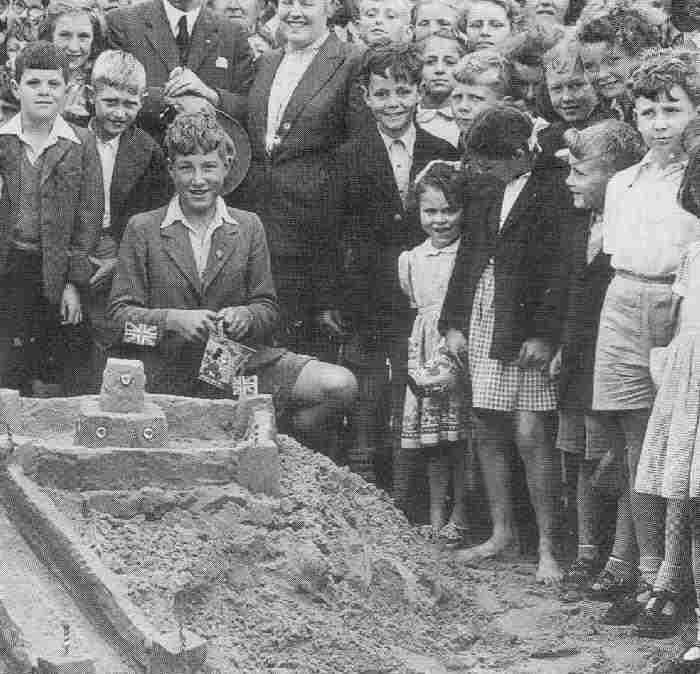
Figure 1.--This sandcastle competition was held in Lytham St Annes during 1952. Notice all the boys wearing suit jackets. I don't think that they all cam from school, but rather that this was the ways boys commonly dressed, even on the beach. |

|
A favorite activity was in fact playing in the sand. This was a wonderful activity for children, alowing them
to exercise their creativity. All could participate as it didn't cost anything. Of course most children were equipped with inexpensive tin buckts and spades. Plastic buckets did not begin to appear until wel after World War II. There was of course a wide ange of abiliities involved. The younger children could just play with their sand bucket and shovels. The older more serious children could build quite elaborate structures and engage in competitions. While both boys and girls loved to play in the sand, it was usually the boys who were the most serious and engaged in the competitions. Building sand castles became an art. We know that this was very popular in America and Britain and suspect it was a popular activity in many other countries as well. We suspect that playing on the beach was especially important in England and Germany where the water can be very cold.
Many of the images we have of children plying in the sand a building sand castles are English images. This is in part because England as a island nation had beaches within a short distance of all its major cities. Visits to the seaside were popular with all social classess and the short distances involved helped to make it a relatively inexpensive excursion that eben working-class families could afford. Early portrairs were taken in srudios with the children holding tin bucjets and shovels. We notice English boys holding long-handel shovels. I remenver items like troiwels came withbeach buckeets, but these shovels may be more of a chronologicl item than a national item.Actual beach images of the children becam increasingly common after World War I. Often boys are earing their regular clothes, only removing their shoes and socks. This suggests that they were not swiming at the beach.
Navigate the Boys' Historical Clothing Web Site:
[Return to the Main seaside activities page]
[Introduction]
[Biographies]
[Catalogs]
[Chronology]
[Clothing styles]
[Countries]
[Literary]
[Bibliographies]
[Contributions]
[FAQs]
[Glossaries]
[Satellite sites]
[Tools]
[Boys' Clothing Home]
Navigate the Boys' Historical Clothing Web Site:
[Sailor suits]
[Sailor hats]
[Buster Brown suits]
[Eton suits]
[Rompers]
[Tunics]
[Smocks]
[Pinafores]
